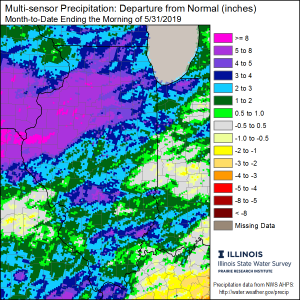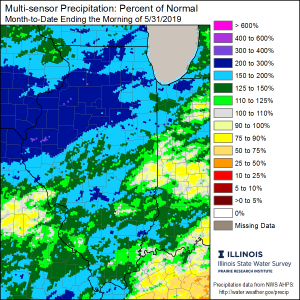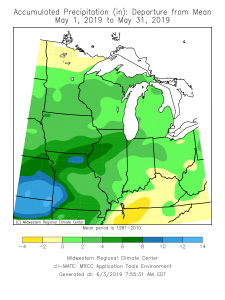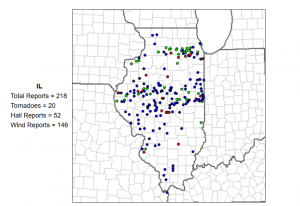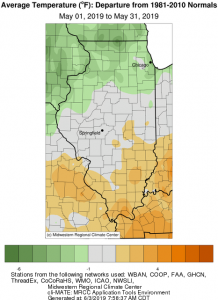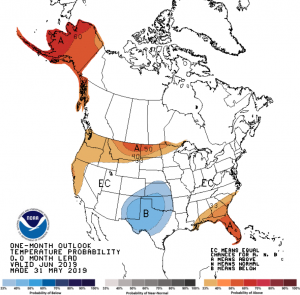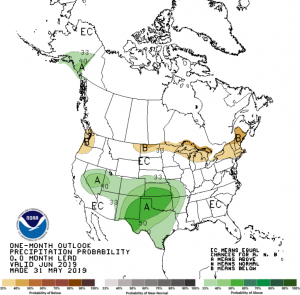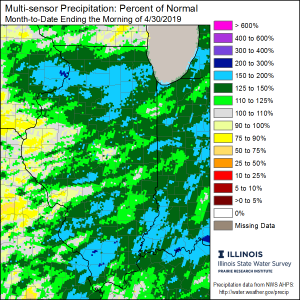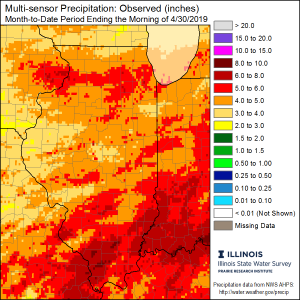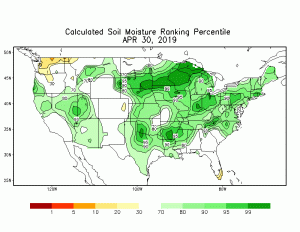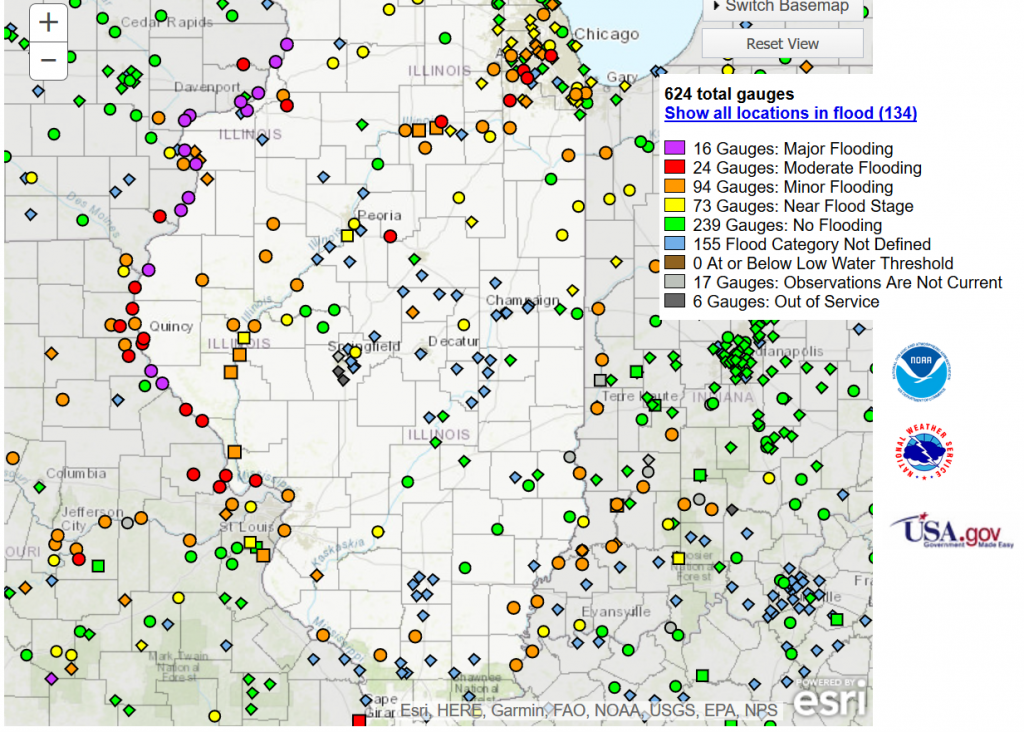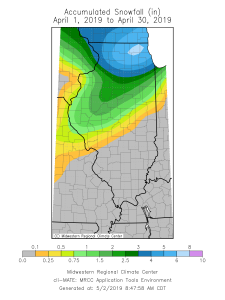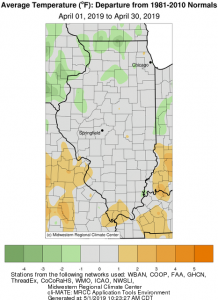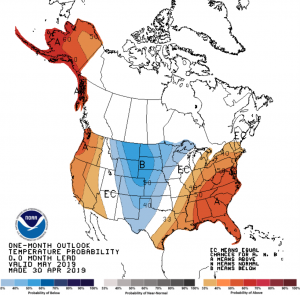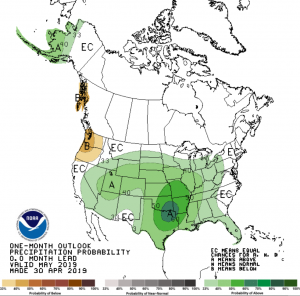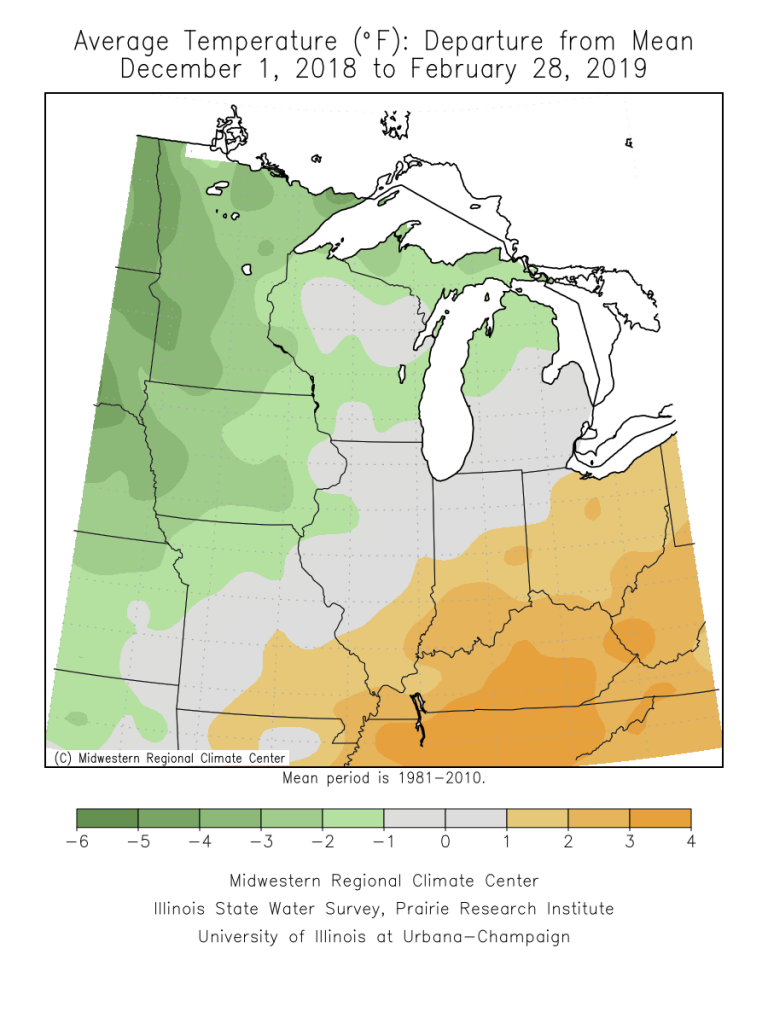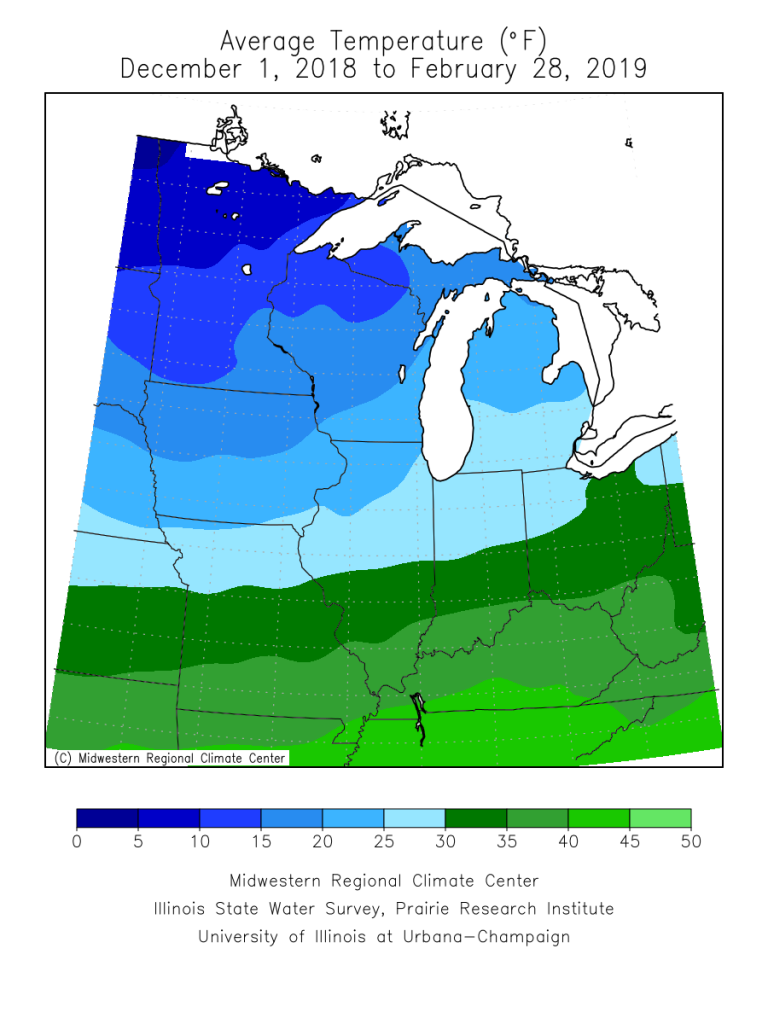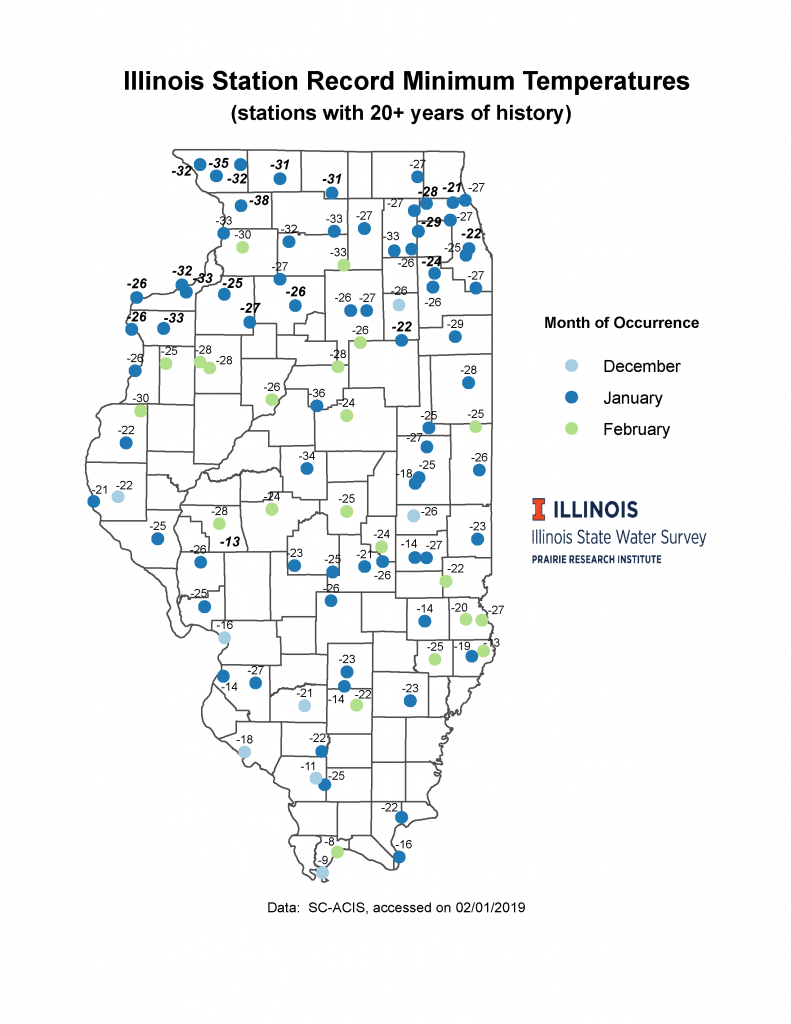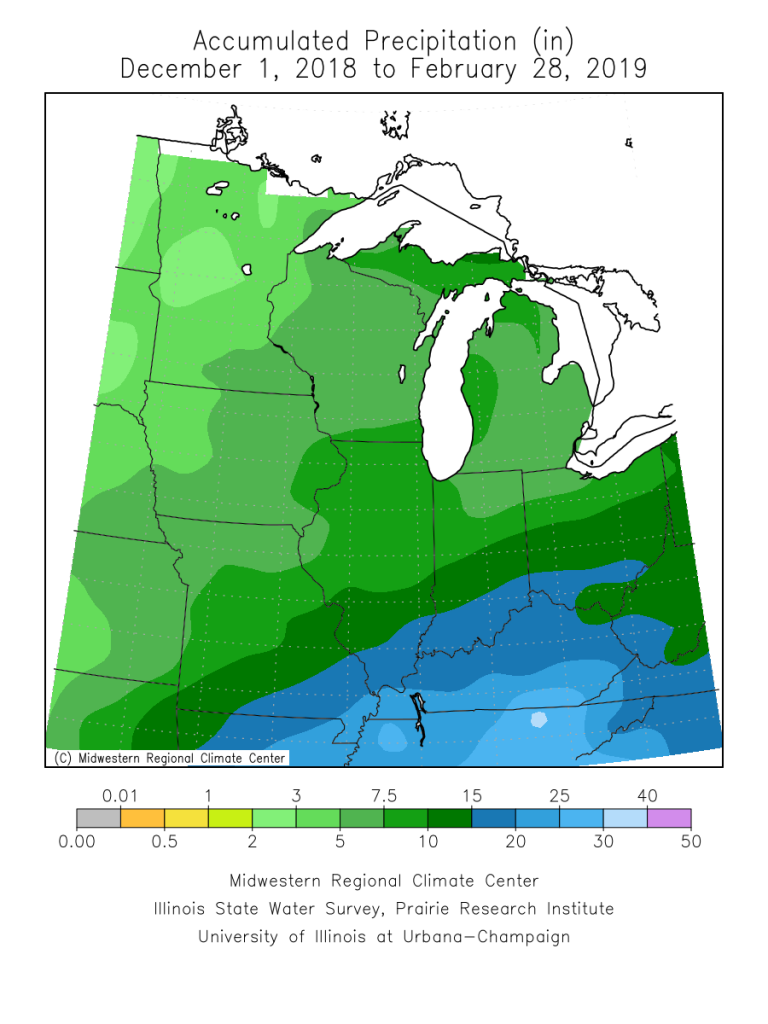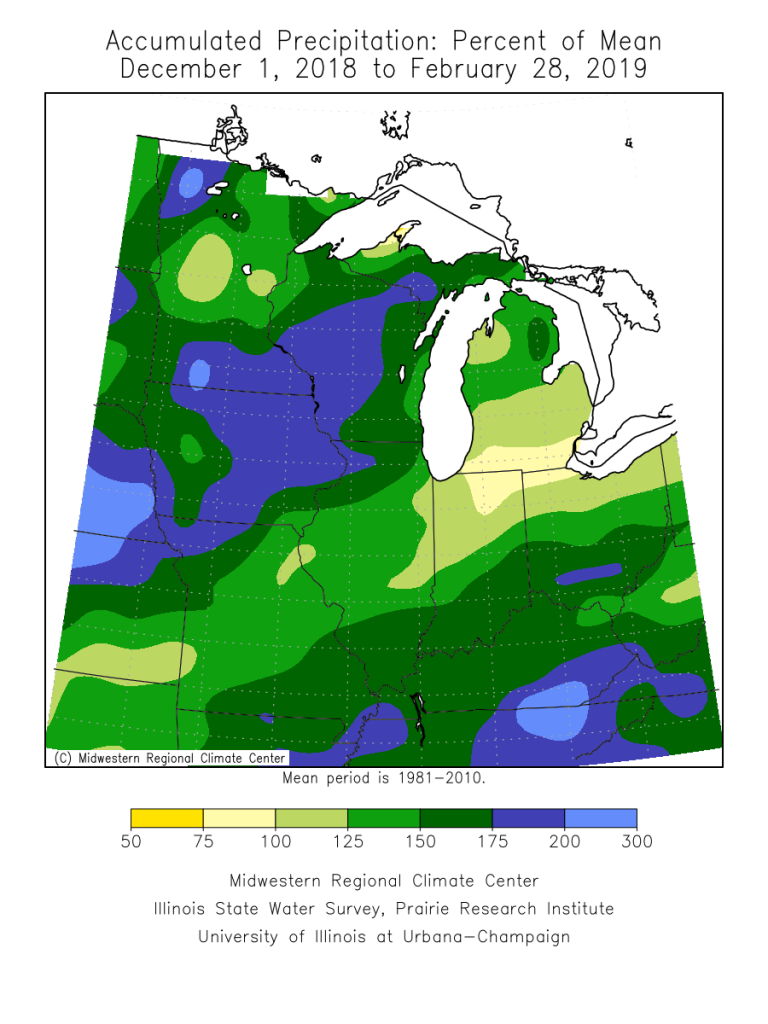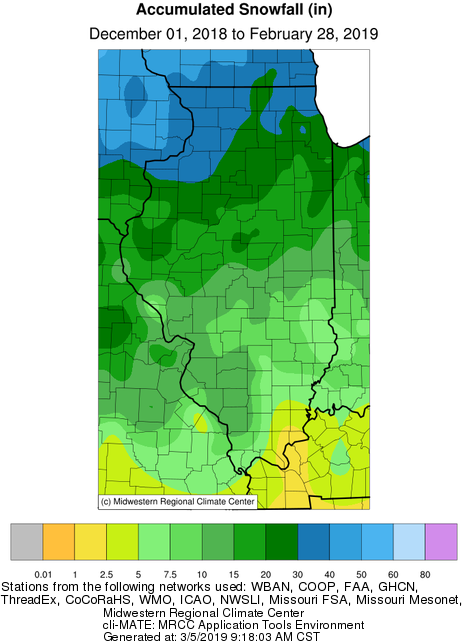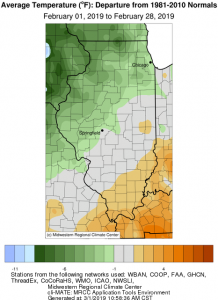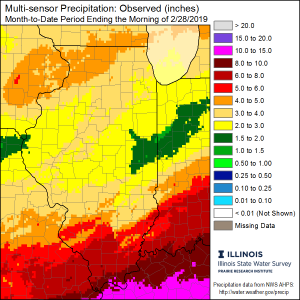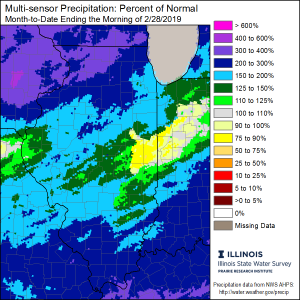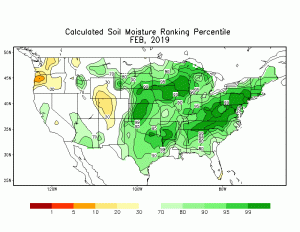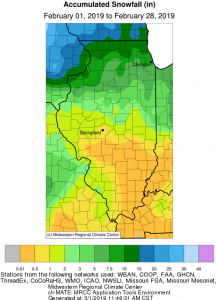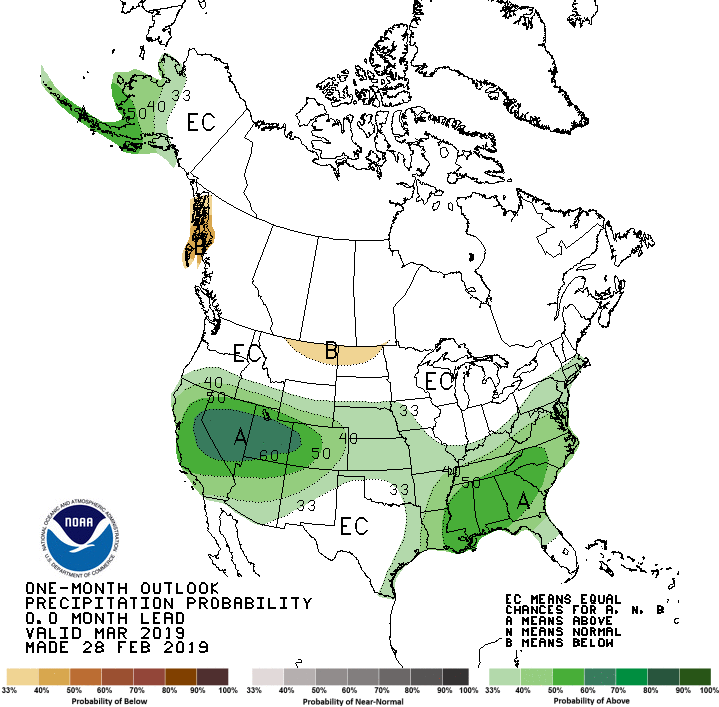May 2019 will be a month remembered for exceptional, record-breaking wet conditions locally, as well as an active, stormy, and at times severe weather pattern across the state.
Preliminary data suggest that May 2019 finished significantly wetter than average, with temperatures marginally below the long-term average. The preliminary average statewide May temperature was 62.5°F, which is 0.2°F below the long-term average. The preliminary average statewide precipitation was 8.43 inches, which is 3.83 inches above the long-term average.
Precipitation
Preliminary statewide average precipitation for May was 8.43 inches, which is 3.83 inches above the long-term average, marking six consecutive months with above average statewide precipitation. As it stands now, spring 2019 will rank within the top four wettest spring seasons in state history (March–May), with May 2019 ranking as the third wettest May in state history.
The multi-sensor precipitation departure map for Illinois shows that practically the entire state received above average precipitation for the month. The only exception was a small region in east-central Illinois near Edgar County, where near to slightly below average precipitation occurred (see maps below).
Portions of west-central and northern Illinois reported the heaviest rainfall for the month, where monthly precipitation departures of 5 to 8 inches above average were common, bringing 200 to 300 percent of average monthly rainfall. An area roughly defined between Quincy and the Quad Cities extending eastward to near Peoria received the most precipitation in the state, with 7 rain gages in this region recording 13 or more inches of rainfall during May.
A gage near Dallas City (Hancock County) reported the highest precipitation total for May, with an impressive 14.75 inches.
Data from the National Weather Service showed that with a report of 8.25 inches, Chicago experienced its wettest May on record, beating the 8.21-inch reading that was set just last year in May 2018.
The abnormally wet May weather has led to a continuation of elevated flooding risks and significant planting delays for the Illinois agricultural community. Moderate and major flooding along many local streams and rivers is still ongoing, with flood warnings along both the Illinois and Mississippi Rivers in effect until further notice.
Wet, active, and stormy weather has not only been an issue for Illinois, but also the weather has been a growing risk across much of the central and southern Midwest including the Corn Belt where notable above average precipitation departures for May were also present (see map below).
Severe Weather
In addition to the relentless rainfall, multiple rounds of severe weather impacted the state throughout the month. Statewide, 218 severe weather reports were noted from the Storm Prediction Center, 20 for tornadoes (red), 52 for hail (green), and 146 for wind (blue). Note that multiple reports may be generated for a single event.
Map of May 2019 Severe Weather Reports in Illinois, updated 6/4/2019
Temperature
Preliminary results show that May 2019 finished with a statewide average temperature of 62.5°F, which is 0.2°F below the long-term average.
Monthly temperature departures showed that the northern third of the state generally saw average temperatures of 1 to 3 degrees below normal, while the southern third of the state generally saw average temperatures of 1 to 3 degrees above normal, with near normal temperatures occurring throughout central Illinois.
The highest maximum temperature in the state was recorded at the Kaskaskia River Navigation Lock (Randolph County) with a reading of 93°F on May 26. In contrast, the lowest minimum temperature of 31°F was recorded at the Chicago Botanical Garden (Cook County) on May 4.
June 2019
Although an active weather pattern looks to continue at least for a portion of the first full week of June, the monthly outlook from the Climate Prediction Center favors equal probabilities for below, near, or above average precipitation and temperatures across Illinois for June 2019.


